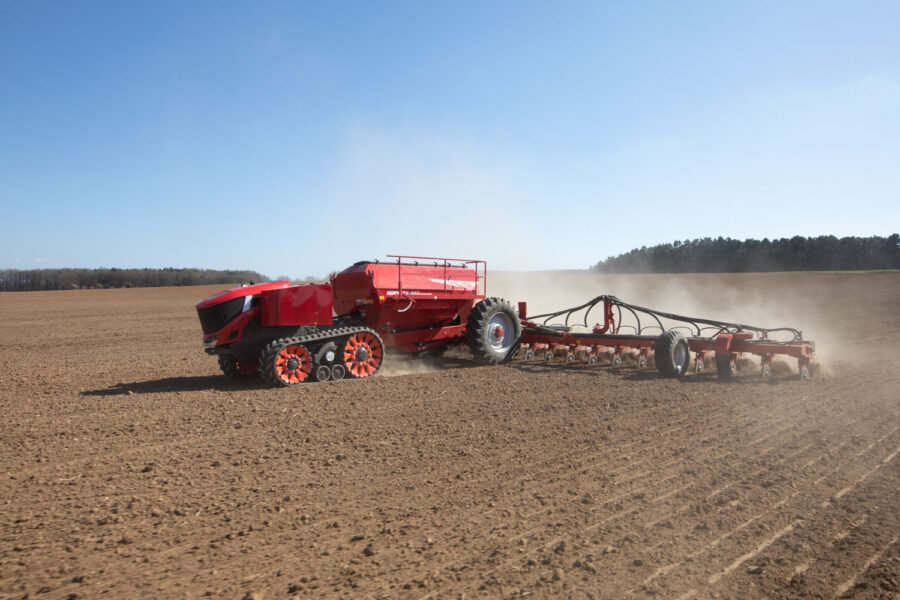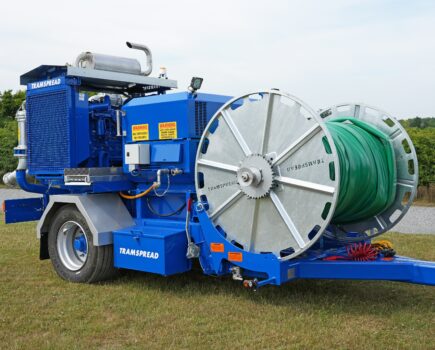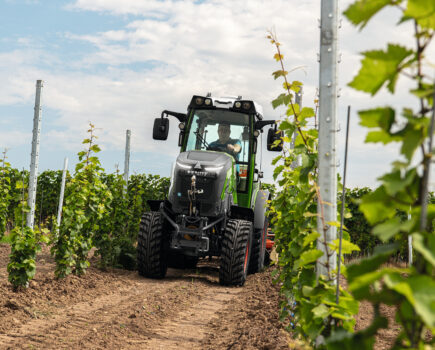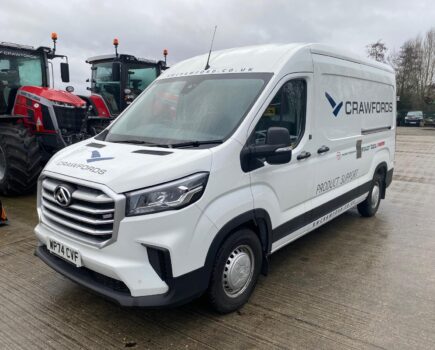Autonomous technologies allow machines to move and operate freely. Complete automation is still in the development stage, but there is already a lot of progress in the market. HORSCH too is working on developments from task automation to autonomous driving systems. The HORSCH Roboter is a development platform for the company to explore autonomous technologies.
Michael and Philipp Horsch have focused on automation and autonomous driving systems since the early 2000s, when they bought the first AutoFarm GPS steering system. It was the first RTK system which allowed for driving within the range of a centimetre. “We immediately thought ‘If something like this works, we should also be able to drive completely autonomously.’ When we bought our test farm AgroVation in the Czech Republic, we had the chance to focus on CTF and track planning. We originally started with an agronomic point of view, but we soon realised that CTF first and foremost is about planning. This was another step towards autonomous driving systems,” says Michael Horsch.
Automation comes before autonomous driving
There are many things associated with the term autonomous that Philipp Horsch would rather call automation. “Take the example of a tractor that drives with GPS and can reverse on its own. This only is an automation step, there is still somebody sitting on the machine who controls it. Autonomous means there is no driver and we are talking about different vehicles, vehicles without a cabin. What is extremely important: Automation comes before autonomous driving. It is definitely the first step. Automation has been an important topic for years and we have been making good progress. However, there still are quite a few hurdles to clear until we reach complete autonomy,” he explains.
Special requirements for autonomous driving
To be able to work in a partially autonomous way today, there are three special requirements: the track planning system, geofencing (a digital fence) and the safety issue. “Today, we solve it by placing a ‘driver’ with a remote control in the field to monitor everything and to intervene in case of emergency. The remote control is effective for a 500m range. These aspects ensure that we can work in the field in a partially autonomous way and be safe,” Philipp Horsch says.
The next step will be the sensor system so that the machine can be monitored, for example, clogging detection. “From a technical point of view, we are working on different concepts. We know we have to take different concepts into the field, exercise respectively, learn and develop further,” adds Philipp.
Changes in the law
Putting autonomous driving systems into practice requires not only technical innovations but changes in the law. At the moment, the law treats the road and field as equal. In Michael Horsch’s opinion there are significant differences regarding different speeds on road and in the field and the issue of opposing traffic. “The need for a re-definition and the public pressure to finally create appropriate framework conditions is enormous. If we separated road and field, we could get started in the field much faster.”
Another point he considers to be essential is the possibility of the homologation of the safety concepts, such as camera systems, radar and lidar systems. “We hope that in the next few years the safety systems will have developed in such a way that they can be homologised, from a technical point of view we are ready. All this is perfectly sufficient for a test farm, for this is where we want to gather experiences, test machines and integrate them into the farm processes,” says Michael.
The users are already there
In the future, the technical realisation will mainly be borne by the next generations who grow up with today’s digital conditions. “The time of the generation that is into fully air-conditioned cabins and a showy bonnet is coming to an end. The next generation is already waiting in the wings, is 14 to 18 years old and digitally native. The ability to deal with touchscreens, smartphones and tablets is almost innate. These young people control everything that moves completely intuitively and without ever having read a user manual. The users are already there. We have to meet the requirements,” concludes Michael.






